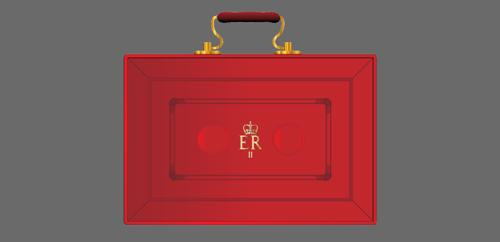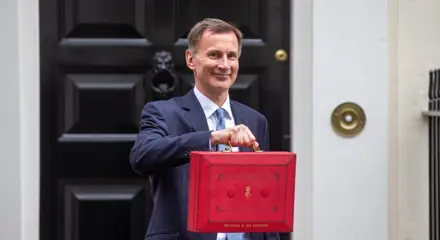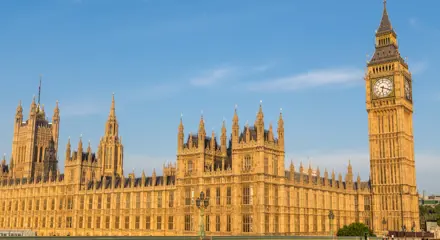- 30 October 2024
![]()
David Mortimer, Head of External Affairs, CGIUKI

The first Labour budget for fourteen years, and first ever by a female chancellor, delivered few surprises as the tone and much of the content had been shared through statements and media outlets in advance. The aim was to convince business, the markets and the public why this cost is necessary to fund the investment in public services. It is one of the big tax raising budgets of the last half century and will shape our economic outlook for years to come.
Over the coming weeks we will examine in more detail what this will mean for governance professionals including those interested in climate change measures and investment in new technologies. Below is a summary of points from the budget but those interested in more detail can find it in the Autumn budget red book.
The Prime Minister had already trailed that it would be a tough budget, crafted to address difficult economic challenges and the harsh fiscal reality the government had inherited.
In a confident speech lasting over an hour, the Chancellor reiterated the government’s commitment to stability, investment and reform, and that the Government would not shy away from the difficult decisions necessary to rebuild the economy.
As expected, Reeves framed much of the need for tax rises as being a result of decisions made by the last government and maintained the OBR had not been given the full facts to allow them to assess the Conservative government’s spending plans.
It was important the Chancellor tell a strong story to justify a budget aimed at raising £40bn. Her narrative was that funding is needed to fill the hole in public finances this year, provide promised compensation awards to those impacted by the Post Office and infected blood scandal, and address failing public services.
Numerous infrastructure spending plans were announced ranging across housing, transport, health, schools, climate change, local government and beyond. Business has been clear that it will welcome that investment towards better infrastructure. That was a strong message from our own FTSE 350 Boardroom Bellwether Survey this Summer and has been repeated by other business organisations.
Whether these will be good value for money will depend on robust governance arrangements being put in place for each of these commitments. We will keep a watching brief on how government addresses these issues, ready to be a critical friend when helpful.
In a nod to failures of governance of previous large infrastructure projects, the Chancellor reiterated her commitment to allowing the public to track progress on national targets across various sectors through the new Infrastructure and Projects Authority, applying good governance principles through her commitment to transparency and to measurable outcomes.
The Office for Budgetary Responsibility (OBR) will now forecast for a period of ten years. Their calculation of the budget forecast inflation to be 2% by the end of the parliament and growth 1.6%, picking up form close to zero last year.
From its current level of 5 per cent, Bank Rate is expected to fall to 3.5 per cent in the final year of the forecast.
Budget policies will increase spending by almost £70 billion, a little over 2 per cent of GDP, each year over the next five years, of which two-thirds goes on current and one-third on capital spending. Half of the increase in spending is funded through an increase in taxes, mainly on employer payrolls, on assets, and through greater tax compliance.
Conscious, no doubt, of the market’s reaction to the Liz Truss fiscal event the new fiscal rules introduced in the budget were known in advance. These rules will govern spending commitments and redefined how debt will be measured to give scope for spending.
The Stability Rule, ensures day-to-day spending is balanced by revenue, signalling fiscal responsibility by avoiding borrowing for this purpose.
The Investment Rule: aims to reduce debt as a percentage of GDP. The OBR figures stated borrowing would fall from 4.5% of GDP to 2.1% by the end of the forecast in 2029/30.
Where will funding for the extra spending come from?
The net effect of Budget policies is to increase borrowing by £19.6 billion this year and by an average of £32.3 billion over the next five years. Spending policies will add £69.5 billion (2.2 per cent of GDP) a year over the next five years, and £71.6 billion by the end of the decade, to the level of public expenditure. On average £45.6 billion goes on current spending and £23.8 billion goes on capital spending.
Budget tax measures will increase total government revenue by £36.2 billion (1.1 per cent of GDP) a year on average and £41.5 billion by the end of the decade. The main components of the increase are:
- an increase in employer NICs, via a higher rate and lower threshold, raising £25.7 billion by 2029-30 before allowing for its indirect effects on the economy,
- several tax compliance measures raising £3.5 billion by 2029-30, and debt collection measures raising a further £2.7 billion,
- changes to the regimes for capital taxes and for non-domiciled taxpayers, which together raise £5.2 billion by 2029-30. Capital Gains tax will rise from 10% to 18% for lower taxpayers and from 20% to 24% for higher rate payers.
- levying of VAT on private school fees, raising £1.7 billion by 2029-30,
- other net tax changes, including increasing the rate of the energy profits levy and extending it to 2029-30 and increasing air passenger duty rates, raising a total of £3.6 billion by 2029-30,
- these are slightly offset by an extension of the freeze and 5p cut to fuel duty rates to 2025-26, costing £3.0 billion in 2025-26 and £0.9 billion by 2029-30.
Business taxes
As promised in the Labour manifesto, there were no rises in income tax, national insurance or VAT from the worker perspective and the income tax freeze will end from 2028/29. However, as expected, businesses will bear some additional costs:
- Employer national insurance to increase by 1.2% from 13.8% to 15%.
- Firms to pay national insurance on workers’ earnings above £5,000 from April, down from £9,100 currently,
- Employment allowance - which allows companies to reduce their national insurance liability - to increase from £5,000 to £10,500
- Tax paid by private equity managers on share of profits from successful deals to rise from up to 28% to up to 32% from April
- Main rate of corporation tax, paid by businesses on taxable profits over £250,000, to stay at 25% until next election.
- Increase in the windfall tax on oil and gas profits from 35% to 38%, effective from November 2024 until March 2030.
- In addition, the minimum wage will increase to £12.21 per hour and the rate will also increase for younger workers.
The Chancellor also promised to crack down on tax evasion by expanding the HMRC’s counter-fraud team to tackle high value and high harm tax fraud.
Companies House also received a mention as part of a collaboration with HMRC and the Insolvency Service to take on ‘contrived’ corporate insolvencies and dissolutions, sometimes referred to as ‘phoenixism’ to evade taxes.
All-employee share plans
Unfortunately, there was little on all-employee share plans in this budget, certainly not the promises of reform we had sought. One small but welcome change will be that an employer must refer to neonatal care pay in their notice to an employee with a Share Incentive Plan.



